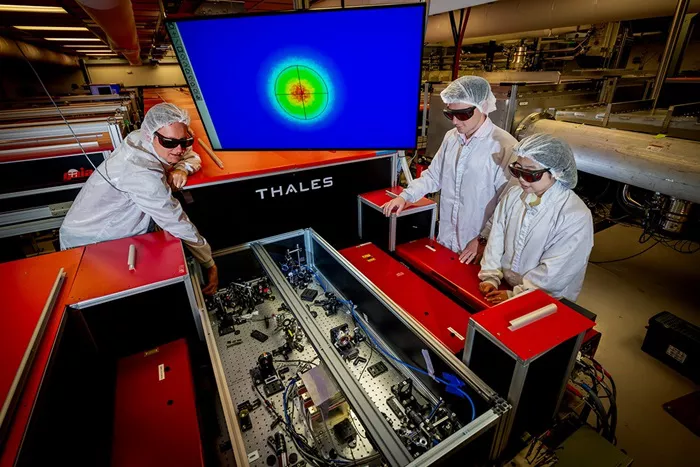Researchers at the Lawrence Berkeley National Laboratory (Berkeley Lab) have made a significant breakthrough in laser technology by using machine learning (ML) to stabilize high-power lasers. This advancement is expected to boost progress in various fields, including physics, medicine, and energy. The study was published in High Power Laser Science and Engineering.
Tackling Laser Jitter
High-power lasers are crucial in both scientific research and industry, with one promising application being laser-plasma accelerators (LPAs). LPAs can accelerate particles over short distances to high energies, potentially leading to smaller and more cost-effective particle colliders. These accelerators could also enable new light sources to explore matter at the atomic level. Additionally, high-power lasers play a key role in advancing inertial fusion, which has the potential for abundant energy production.
However, these lasers are often affected by “jitter,” or fluctuations in beam pointing, caused by mechanical vibrations. This issue negatively impacts the laser’s performance and slows progress in applications like LPAs and fusion.
“Jitter is especially problematic in LPAs because it destabilizes the generated electron beam,” said Dan Wang, a research scientist at Berkeley Lab and a lead author of the study. “This limits the practical use of LPAs.”
Traditional laser control systems struggle to keep up with fast-moving errors in laser positioning, especially in large, slow-moving optical components. This often leads to errors between laser shots, which disrupt experiments.
Machine Learning to the Rescue
To address this challenge, the research team applied machine learning. Unlike traditional systems, which correct pointing errors after they occur, their approach predicts jitter in real time. The system then adjusts the laser’s optical components to stabilize the beam before errors impact the next shot.
“Our method uses machine learning to predict jitter and adjust the optical components accordingly, improving stabilization and beam accuracy,” explained Alessio Amodio, an engineer at Berkeley Lab and another lead author of the study.
Testing the Approach
To test their method, the team used a low-power, high-repetition-rate “pilot” laser beam as a stand-in for the main high-power beam. The pilot beam, which fires more frequently, allowed them to track vibrations in the mirrors and predict where the main beam would be when it arrived.
By feeding this data into their ML-powered control system, they were able to adjust the mirror and reduce jitter. The system achieved a 65% reduction in jitter along the X-axis and 47% along the Y-axis.
“We plan to further improve the system using field-programmable gate arrays to achieve faster and more accurate real-time corrections,” Wang said. “This will enhance laser stability, with plans to test it on the full-power BELLA Petawatt laser.”
The research was supported by the U.S. Department of Energy’s Office of High Energy Physics and Berkeley Lab’s Laboratory Directed Research and Development Program.
About Berkeley Lab
Lawrence Berkeley National Laboratory (Berkeley Lab) is known for its innovative research in areas such as materials science, chemistry, physics, biology, and energy. With a history of pioneering work, Berkeley Lab has earned 16 Nobel Prizes. Managed by the University of California for the U.S. Department of Energy’s Office of Science, the lab continues to be at the forefront of scientific discovery.

